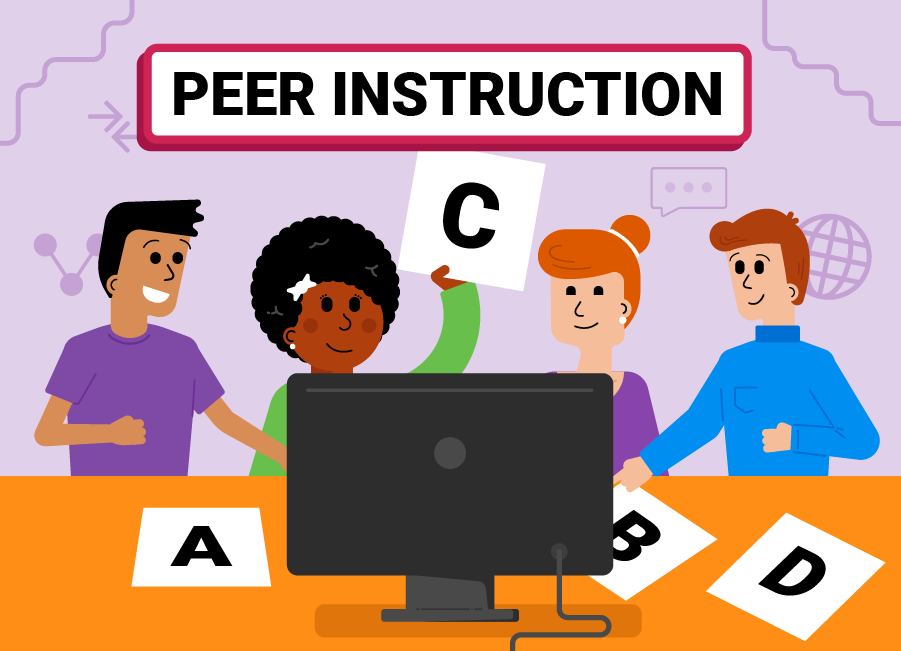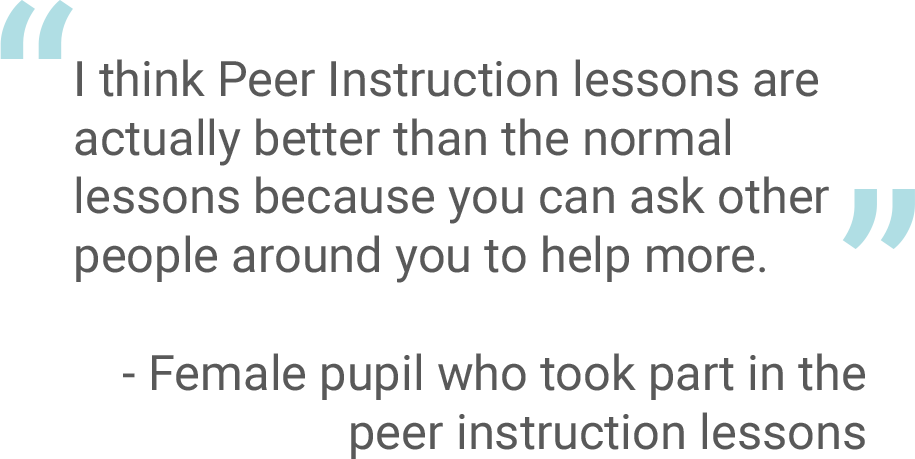
Previous research has shown that structured, collaborative teaching methods can enhance girls’ involvement in STEM subjects like physics. One such method is peer instruction, where students engage in discussions with peers to respond to predefined multiple-choice questions (MCQs). Through these discussions, pupils can deepen their understanding about why a particular concept or fact is correct, and correct any misconceptions. In this project, we collaborated with teachers of Year 8 students (aged 12 to 13) in England to investigate whether implementing a peer instruction approach in computing lessons positively impacted girls’ attitudes towards the subject and their intention to pursue it in the future.

| Date range of intervention | January–March 2020 (pilot study) and October 2021–February 2022 |
| Age of participating students | 12–13 years old |
| Aim of intervention | To investigate whether implementing the peer instruction teaching method in computing lessons positively influenced girls’ attitudes towards computing and their future intentions to pursue it |
| Intervention | 12 weeks of computing lessons in data representation and Python programming. The lessons incorporated peer instruction pedagogy and the accompanying resources included example MCQs in each lesson |
| Method | We conducted a pilot study with 15 secondary schools. Based on teachers’ feedback from this pilot, we ran a comprehensive randomised controlled trial (RCT) with over 60 secondary schools Schools were assigned at random to either the ‘treatment’ group, using the intervention resources, or the ‘control’ group, who continued with their usual computing lessons |
| Evaluation | The pair programming intervention was evaluated independently by an organisation called Behavioural Insights Team (BIT). BIT’s evaluation was primarily based on quantitative data collected from learners at the start and the end of the trial using a validated instrument called the Student Computer Science Attitude Survey (SCSAS), which asks learners about their attitudes towards Computing, along with a few additional survey questions specific to this evaluation. The evaluation team analysed the data about girls’ attitudes towards computing and compared the differences between the control group and the treatment group. BIT also visited five schools in the treatment group to collect qualitative data through lesson observations, teacher interviews, and focus groups with students who had participated in the lessons. This data was analysed using case study methodology. |

The intervention using peer instruction in computing lessons did not yield statistically significant evidence of increased intention among girls to study computer science at GCSE or positively affect their attitudes towards computing, based on the findings. However, feedback from teachers and students indicated that the approach was generally engaging and inclusive.
Some teachers noted that preparing lessons using peer instruction took considerable time. Simplifying resources could alleviate this burden in future implementations. However, teachers found the topic-related multiple-choice questions (MCQs) to be highly valuable resources for teaching and learning.
In future research, integrating longitudinal tracking of pupils’ GCSE subject choices could provide insights into the long-term effects of the intervention.
You can learn more about the pair programming teaching method by watching a video filmed at one of the schools involved in the program and downloading the resources used by schools in the treatment group.
Childs, K. (2021). Factors that impact gender balance in computing. In Understanding computing education (Vol. 1). Proceedings of the Raspberry Pi Foundation Research Seminars.
Leonard, H. C., Quinlan, O., & Sentance, S. (2021, September). Female pupils’ attitudes to computing in early adolescence. In Proceedings of the 2021 Conference on United Kingdom & Ireland Computing Education Research (pp. 1-6). (Open-access author copy, presentation slides, and video presentation)